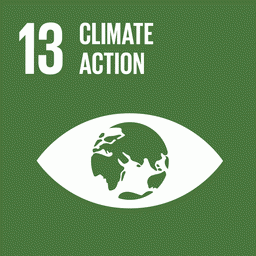By Camila Santana*
Rebecca Maranhão is a researcher at IPAM (Instituto de Pesquisa Ambiental da Amazônia) and is part of the team responsible for collecting data on FPNDs (Public Forests Not Destined) monitored by the Observatory of Public Forests. In an interview with Um Grau e Meio, she explains the importance of allocating these areas to indigenous peoples and traditional communities and warns of the impact of the deforestation of these forests on Brazil’s population.
The Observatory’s July data update reveals a worrying picture of deforestation in FPNDs in the Amazon, especially in the states of Pará and Amazonas. The platform provides civil society, academia and decision-makers with information to understand the dynamics of deforestation in public forests, based on the transparency of up-to-date and reliable data.
IPAM: Why has deforestation increased in the FPNDs?
Rebecca Maranhão: The increase in deforestation in the region at this time is generally linked to the dry season, which runs from July to October. According to a survey by the MapBiomas Fogo network, coordinated by IPAM, it is also between August and November that 75% of the entire area burned in the Amazon from 1985 to 2022 is observed. These are opportune times for invasions and illegal activities in the forest, which results in an increase in deforestation and the occurrence of fires. These factors, coupled with climate change – in which there is less rainfall, drier weather and higher temperatures – make areas of native vegetation more susceptible to fires. To give you an idea, from 2022 to 2023 , IPAM identified a 32% increase in the area affected by fire in undesignated public forests.
IPAM: What are the impacts of the loss of these forests for the Amazon and Brazil?
There are many impacts, both in terms of environmental and ecological services and socio-economics on a local, regional and global scale. The loss of forests also affects biodiversity, water resources, soil health and pollination. For example, forests have a wealth of tree species, which release almost 500 liters of water into the atmosphere, helping to maintain the rainfall regime in the region and beyond. In other words, the forest plays a key role in maintaining water resources, in the survival of rivers, which are crucial for the navigability and food security of Amazonian populations. On the other hand, the balance of the rainfall cycle has an impact on the irrigation of agriculture in the Cerrado, an economic and food security source. A study carried out by IPAM and the Woodwell Climate Research Center pointed out that 28% of the agricultural area in the Midwest, in the transition region between the Amazon and the Cerrado, is already beyond planting conditions due to extreme weather.
What priority should be given to allocating these FPNDs?
A destination aimed at the sustainable use of these forests is essential. Conservation units and indigenous lands store around 56% of the carbon in the Amazon biome and, according to a survey by the MapBiomas network in2024, deforestation in indigenous areas, for example, was only 1% in 39 years.
So earmarking itself is just a first step towards ensuring that these forests are in the hands of indigenous peoples and traditional communities who have historically conserved the environment. However, it is essential that there is public policy support for these populations to continue their ways of life, exercising their right to the land, as this brings benefits to the country, whether from a production or socio-environmental point of view.
What is the role of the Observatory of Unallocated Public Forests?
Brazil’s land issues are complex and access to information about undesignated public forests is still difficult. The Observatory has this role of informing civil society about what these forests are. It is also a way of monitoring the situation in these areas and the process of allocation by the Technical Chamber of Public Forests recently reactivated by the federal government. The platform provides a counter of the destination of the forests, as well as information on illegal deforestation, CAR (Rural Environmental Registry) in FPNDs, carbon stock and other relevant data, so that we can understand what is happening to this vast expanse of forest that belongs to all of us.Providing transparency about this data is essential to engage society and public officials in the urgent need to set aside these areas.
How important is up-to-date, continuous and reliable research and data on FPNDs?
Having a consolidated database, with transparency, reinforces the importance of research not only in monitoring, but also in the temporal analysis of impacts, deforestation and mining, as well as the potential, biodiversity, carbon stock and benefits of the forest. Obtaining this over time is essential to understanding governance, how this is going in terms of governmental public policies.
*IPAM journalist
